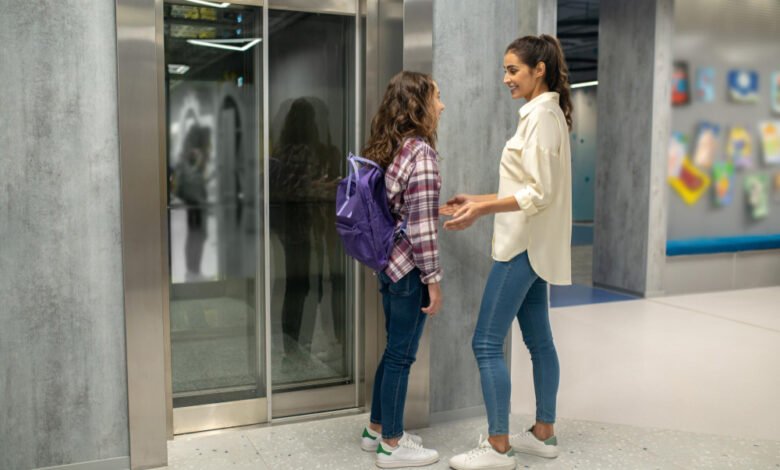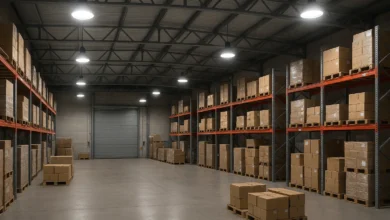Platform Lifts vs. Traditional Elevators: Which Is Right for Your Project?

Choosing between the platform lifts and a traditional elevators can feel complicated. Both serve the same purpose, but the way they work, the cost, and their ideal use cases differ a great deal. If you are deciding which option will fit your building or project, there are a few key factors you need to weigh carefully before making the call.
How They Differ
A traditional elevator is what most people picture when they think of vertical transport. It uses a full enclosed car, a counterweight system, and usually requires a deep pit and a shaft built into the structure. These elevators can travel several floors quickly and handle significant weight, which is why they are common in commercial and multi-storey buildings.
Bespoke platform lift solutions, by contrast, have a simpler design. It typically consists of a platform that travels between floors, often without a fully enclosed shaft or the need for a pit. Platform lifts move at a slower speed, are designed for shorter travel distances, and usually carry fewer passengers at one time. They are frequently installed where accessibility is the priority, or where space and budget constraints make a full lift impractical.
Understanding these core differences will help you narrow down which solution better meets your project’s requirements.
Key Factors to Consider
When comparing the two, there are several aspects to focus on. Looking at these will make it clear which one aligns better with your needs.
1. Installation Requirements
Traditional elevators need a dedicated shaft, machinery space, and structural work to support the system. Installing one can mean significant building alterations, especially in existing properties.
Platform lifts are far less invasive. They can often be installed with minimal construction work, sometimes even in spaces where a full elevator is not possible. This can make them an appealing choice for retrofits or small-scale projects.
2. Speed and Travel Distance
If the lift needs to cover multiple floors quickly, a traditional elevator is usually the only realistic option. They can travel faster and are built to handle tall buildings.
Platform lifts are slower and usually have limits on travel height. They are best for one to three floors, such as in small commercial spaces or private buildings where speed is not the main concern.
3. Capacity
A traditional elevator can carry a high number of passengers or heavy loads with ease. They are built to handle frequent use throughout the day.
Platform lifts generally carry fewer passengers, often designed to accommodate a wheelchair user and one or two companions at a time. If the lift will be used constantly by large groups, the platform option might not be suitable.
4. Cost
The difference in cost can be substantial. Traditional elevators involve higher installation costs, complex engineering, and regular maintenance. Platform lifts have a lower initial cost and simpler upkeep, which is often the deciding factor for many projects with tighter budgets.
5. Regulations and Accessibility
Both systems can meet accessibility standards, but platform lifts are often specifically chosen for accessibility upgrades. They meet regulatory requirements for wheelchair access without requiring major changes to the building’s structure.
Traditional elevators also meet these standards but are usually chosen for buildings where high capacity and speed are essential, rather than just accessibility.
When a Platform Lift Makes Sense
A platform lift works best in projects where:
- Space is tight – They can be installed without large-scale structural work.
- Budget is limited – They are more affordable to purchase and maintain.
- Travel distance is short – Ideal for one or two floors.
- Accessibility is the main goal – Designed to provide inclusive access without major renovation.
- Low traffic is expected – Perfect for private use or buildings with modest footfall.
When a Traditional Elevator is the Better Choice
A full elevator is worth the investment if:
- The building is multi-storey – Essential for tall structures with frequent traffic.
- Speed is important – They travel faster, reducing wait times.
- High capacity is required – Handles many passengers and heavier loads.
- Longevity and durability are priorities – Built for heavy-duty, constant use.
- The budget allows for structural work, covering both installation and ongoing maintenance costs.
Which One Fits Your Project Best?
The right decision comes down to how the lift will be used. For a busy, multi-level building where speed and capacity are key, a traditional elevator is usually non-negotiable. However, for smaller buildings, particularly where accessibility is the priority or space is limited, a platform lift can achieve the same core function without the extensive installation and cost of a full elevator.
It helps to start with a clear assessment of your building, who will be using the lift, and how often it will be in service. From there, consider your budget and the level of disruption you can tolerate during installation. These factors will quickly show which type of lift is the smarter investment.
Making the Final Decision
Selecting between these two options is about more than just the price tag. It is about how the lift will serve the people who use it every day. Take the time to evaluate the space, traffic, and long-term needs, and you will avoid unnecessary costs or performance issues down the line. With the right choice, you can create a building that is accessible, functional, and future-ready.




